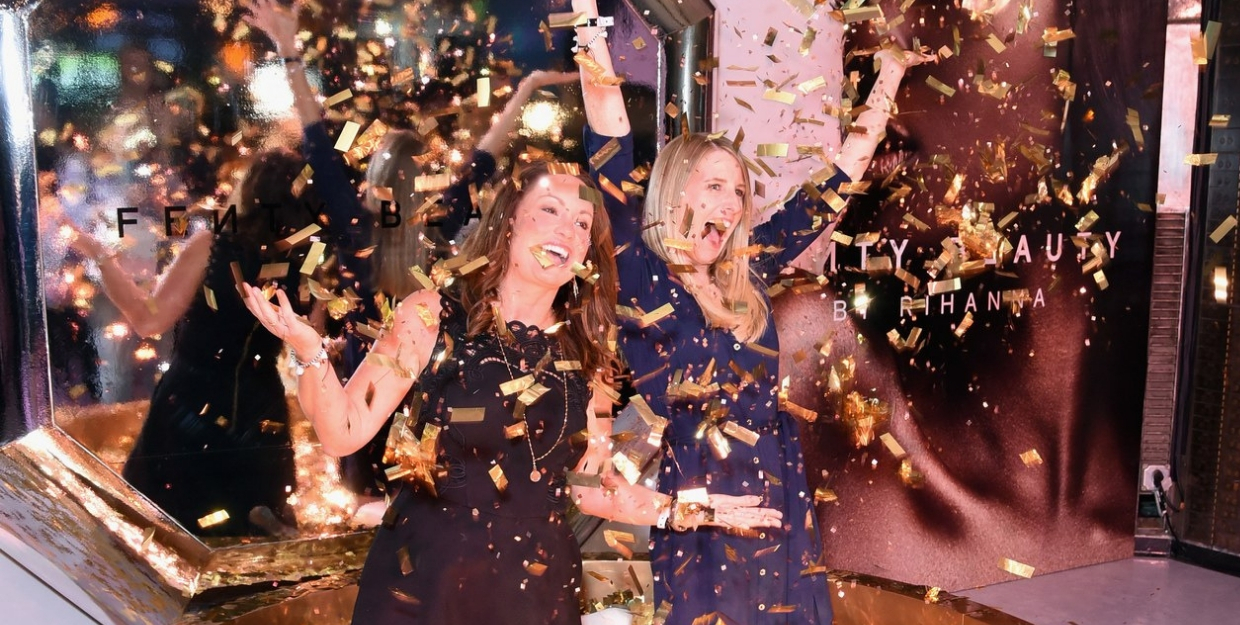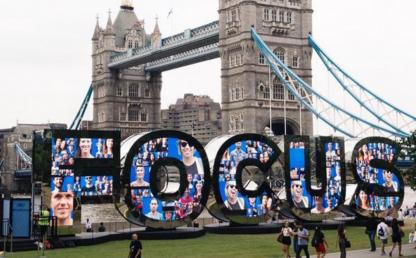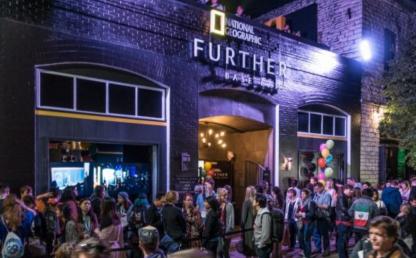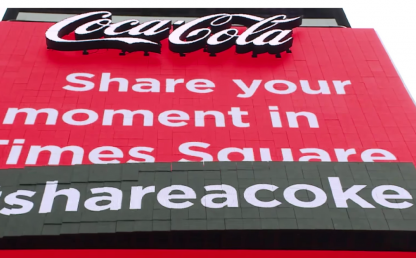Retailtainment: How You Can Implement it to Engage Your Customers?

Have you heard the buzz word ‘Retailtainment” and wondered what it means exactly? For those that don’t know, it is the practice of using retail marketing as entertainment. In other words, using an experience involving activities, sound, emotion, and ambiance to pique customer interest and facilitate a mood that motivates buying. At a time when e-commerce is rapidly growing at the expense of in-store purchasing, retailtainment breathes life into the retail world, adding a new lure to bring people into brick-and-mortar stores.
Here’s a closer look at retailtainment, how brands have implemented it successfully, and how Catalyst can help you launch an effective campaign for your brand.
Trends in E-commerce Are Driving the Need for Retailtainment.
Consider that in 2018, 8.8% of total retail sales worldwide were online, up from 5.9% in 2014. Further, 47.3% of the total internet population has shopped online, up from 42.7% in 2014. The founder of Fartech, an e-commerce portal for luxury boutiques, says “While physical retail accounts for 93% of sales today, by 2025 it is expected to account for just 80%.”
Further, consider, that the National Retail Federation’s (NRF) announced that e-commerce sales are on track to overtake in-store sales by 2024 in the US. See the crossing point in the graph below.

This global shift towards online shopping doesn’t mean retail stores will become irrelevant. Instead, they will become more of a marketing tool where customers can experience products and brands in-person. Being so, retailtainment is a great way to amp up the in-store experience and move customers toward the purchase.
Retailtainment Trends
What trends are we seeing in the world of retailtainment?
QR Codes
Starting off with the most simple - QR codes. QR codes can be used in a variety of ways to engage customers in a retail store. As Amazon demonstrated in the Amazon Go retail store, they can be used to enable a ‘walk out’ shopping experience. Customers scan a QR code to walk into the store in the Amazon Go app, then when they leave, they are automatically charged for the items they leave with through their Amazon account. QR codes can also be featured around the store to give customers more information on products and product availability and can help customers find the items they wish to purchase within a store.
Retail Tech
As technology advances, implementing it into retail stores in a variety of creative ways can help to create interactive and personalized experiences. Some examples include near-field communications, mobile point of sale systems, beacons, and Bluetooth which can help you to identify customers when they walk in and provide them with relevant information.
Interactive Store Design
Interactive store design incorporates elements that engage a customer’s senses. It can be through taste, smell, sound, sight, or touch. Many stores are incorporating interactive designs such as the House of Vans with it’s in-store skate ramp and Beerwolf Books with its in-store pub.
Mini-destinations
Brands are also creating mini-destinations within their stores that attract customers. These are places with areas to relax or interact with the brand in some way. For example, in a cell phone store, it could be a little room with the furnishings of a living room where customers can sit down, relax, and play with different models of cell phones like they would at home.
Let’s take a look at how some of the leading brands have actually put retailtainment into action.
How to Implement Retailtainment?
Here are nine examples of retailtainment at its best.
1. Tiffany & Co. - Style Studio
Tiffany & Co. launched the Covent Garden Style Studio, a retailtainment experience that encourages play and creative interaction. The Style Studio features Tiffany blue wooden crates with Everyday Objects, a Tiffany fragrance vending machine, and a personalization bar entitled #MakeItTiffany which lets customers self-style their products. Tiffany’s most desired collections, Tiffany T and Tiffany City HardWear, were also curated within the space. Additionally, the brand hosted a variety of events within the studio such as styling sessions, performances, art installments, and guest appearances by creative innovators. This was a great way to let customers interact with the brand and make Tiffany products their own.
2. Sephora - House of Beauty
Sephora is known for having a bright shopping environment and has always had a discovery-based shopping experience style with a wide product assortment. The brand stepped up its game on its 20th anniversary by launching the ‘Sephora House of Beauty.’ It took over a three-story venue in downtown Los Angeles and completely transformed it to include Instagram museum moments, master classes taught by thought leaders, entertainment, and product demos.
Attendees could purchase tickets which would let them enter the venue for four hours. The brand was completely brought to life, creating a space for inspiration, learning, and playing. Over 5,000 people attended the Sephora House of Beauty with ticket costs ranging from $99 to $449. The campaign helped to boost brand awareness and reach.
3. Farfetch - Store of the future
Farfetch created an augmented reality experience in a London retail store which uses data to enhance the retail experience. The brand implemented virtual stations where customers could sign in and review their wish lists and purchase histories. The insight could then be used by sales assistants to help the customer find products that match their interests.
Additionally, smart touchscreen mirrors were installed in dressing rooms which enabled the customer to request different sizes and products as well as allowing them to pay for items. Customers were also able to custom order shoes with different fabrics and styles. This technology helped to make the shopping experience more convenient and personalized it to the shopper.

4. IKEA - The IKEA Sleepover
Have you ever been in an Ikea store and had the desire to move in? If so, you are not alone. Ikea decided to make that dream come true. It held a Facebook challenge and 100 lucky winners got to spend the night in the Ikea warehouse in Essex. Winners were able to choose the pillows, mattress, and sheets they wanted and a sleep expert was on site to provide tips on getting a good night of rest. Additionally, attendees could get massages or could visit the in-warehouse salon. This experience enabled the brand to apply experiential marketing to its retail strategy through social media, helping them obtain a boost in engagement and visibility.

5. Vans - House of Vans
The ‘House of Vans’ in London is a great example of how a brand can do retailtainment right. As a brand for skaters and bikers, what better to offer your customers than space to skate or bike in the store?
The House of Vans features a concrete ramp, mini ramp, street course, cinema, cafe, live music venue, and art gallery. The skate park is free and open to skaters as young as five years old. It’s truly where fun, memorable experiences, and shopping all come together.

6. Nike - Interactive Lockers
Nike - always at the forefront of trends recently opened a store in LA with a new concept. Interactive lockers. Consumers can purchase their shoes online and collect them from one of the lockers using a unique QR code.
7. TOMs - VR Headset experience
Next, shoe brand TOMs utilized virtual reality technology to help shoppers understand how the company helps the world. The brand has a One for One giving campaign in partnership with Save the Children where it donates one pair of shoes to a child in need for every pair of shoes sold. TOMs has given over 45 million pairs of shoes in over 70 countries around the world, so bringing that mission into the awareness of the customers is important.
VR headsets were placed in 100 retail stores. When customers put them on, they were transported to Peru where they could walk through the village where locals were smiling and waving. They could see first-hand how happy these people were to receive the shoes. This campaign created a powerful and immersive experience in the TOMs retail store that not only promoted their giving campaign but also improved awareness of their social corporate responsibility.

8. Late Night Chameleon Cafe (LNCC)
LNCC is a progressive retail store in London that features a library, record shop, and club alongside its physical retail store. The company has committed to supporting sustainable and ethical products by creating standards and including products that abide by them in its lineup. Customers can view a unique range of eco-aware items from mainline designers by appointment only. As for regular visitors, the library entices book lovers while the bar/club offers a myriad of all natural drinks. LNCC is much more than a store, it lives its values and brings them to life to give customers an experience that challenges the status quo of retail.

9. Urban Outfitters - Spaces
Last but not least, Urban Outfitters has created ‘Spaces’ to bring together retail, dining, artist collaborations, events, and popups for local communities. Currently, Space 15 Twenty is found in Los Angeles, California, Space 24 Twenty is in Austin, Texas, and Space Ninety 8 is in Williamsburg, New York. The areas offer a place for like-minded people to get together around Urban Outfitters products and branding. A genius way to bring the brand to life.
Catalyst can help bring Retailtainment to your brand...
All of these examples use creative ideas to bring customers into brand experiences in-person. It’s about understanding what your audience interests are and then creating a space to engage with them.
Are you looking to incorporate retailtainment into your retail store(s) but aren’t sure how to start? Here are a few guidelines to keep in mind.
Surprise your Customers: The experience should be unique and unexpected. Be Original: Don’t copy something someone else has done, think about what you can do to engage your audience in a way that is natural for your product or service. Engage the Senses: Use tactics that engage the senses of your customers to help make the experience memorable. Make it Personal: Find some way to tailor the experience to the individual so they feel you care about them. Use Tech Purposefully: Technology can be great but you have to know how to use it properly and effectively, not just because.
With retailtainment, you can get creative and transport your audience into a new world where they experience your brand in real life.
Want help? Contact the experiential marketing experts at Catalyst to help you plan your next marketing campaign.
 Insights
Insights




